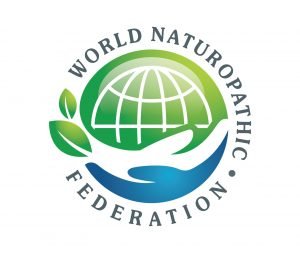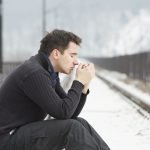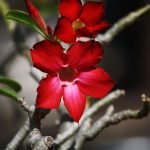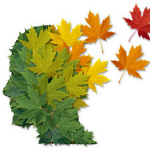WNF: Status of the World Naturopathic Federation
Iva Lloyd, ND, RPP
Naturopathic News
The 2nd World Naturopathic Federation (WNF) General Assembly was hosted at the American Association of Naturopathic Physicians (AANP) conference July 11-12, 2017, in Phoenix, AZ. The following is a summary of the WNF presentation that was shared with AANP delegates.
History of the WNF
 The idea of having a world federation to represent the global interests of the naturopathic profession has been tried several times in the past, but has never really gotten off the ground. The idea to form a world federation was discussed at the 2013 International Congress on Naturopathic Medicine (ICNM) conference, was furthered by the efforts of the AANP’s Global Health Network, and was then spearheaded by naturopathic doctors Tabatha Parker and Jon Wardle.
The idea of having a world federation to represent the global interests of the naturopathic profession has been tried several times in the past, but has never really gotten off the ground. The idea to form a world federation was discussed at the 2013 International Congress on Naturopathic Medicine (ICNM) conference, was furthered by the efforts of the AANP’s Global Health Network, and was then spearheaded by naturopathic doctors Tabatha Parker and Jon Wardle.
During the 2014 ICNM conference in Paris, France, 30 naturopaths / naturopathic doctors spanning 20 countries attended meetings where the mission of a world federation was discussed. At the closing meeting, it was unanimously agreed to start the World Naturopathic Federation (WNF). An interim committee, made up of naturopaths / naturopathic doctors from Australia, Belgium, Canada, France, India, New Zealand, Spain, and the United States, was selected to formally incorporate the WNF and to create an infrastructure for the WNF including bylaws, a logo, and website.
In November of 2014, the WNF was officially incorporated in Canada. The inaugural meeting of the WNF was held in June 2015 in Calgary, Canada, during the CAND’s Health Fusion conference. The focus of the 1st WNF General Assembly was on brainstorming and determining the priorities of the WNF for the next few years.
WNF’s Mission
The mission of the WNF is to:
- Support the growth and diversity of the naturopathic profession worldwide
- Support the regulation of the naturopathic profession
- Promote accreditation and the highest in educational standards for the global naturopathic profession
- Encourage and support quality naturopathic research
- Establish and maintain a database of naturopathic organizations, regulation, accreditation, conferences, and research activities
- Build relationships with world agencies (World Health Organization, United Nations, UNESCO) and national governments
Surveying the Naturopathic Profession
One of the first projects of the WNF was to assess the status of the naturopathic profession globally. This was accomplished by conducting a number of surveys. The first one surveyed the profession as to how naturopathy was practiced. In July of 2014, a 79-question survey was sent to national naturopathic organizations from 30 countries, spanning all world regions. The response rate was 73%.
The survey indicated a high degree of consistency among naturopathic terms, definitions, philosophies, principles, and theories. Over 77% of the countries surveyed use the term “naturopath,” and 41% used “naturopathic doctor.” There was also a strong commonality among the naturopathic theories taught worldwide. The survey indicated a high degree of variability in educational standards, regulatory status, and number of practitioners. The survey results were published in the 2015 World Federation Report.1
Then, between February and April of 2016, the WNF conducted a survey of 86 naturopathic educational institutions, which inquired about what was taught in naturopathic schools. This survey indicated an extremely high degree of consistency within naturopathic curriculums worldwide. One hundred percent of the respondents indicated that their curriculum includes the study of basic science, clinical science, naturopathic history, principles, philosophy and theories, naturopathic disciplines, and clinical practice. Similar to the profession survey, this survey indicated high agreement among the foundational aspects, including the philosophies of vitalism and holism, the 6 naturopathic principles (see Figure 1), and core naturopathic theories and modalities; this was in spite of the variations in educational standards. The survey results were published in the 2016 Naturopathic Roots Report.2

Figure 1. Naturopathic Principles Survey
The WNF’s third undertaking was to request the full curriculum from 6 naturopathic schools spanning 3 world regions: Europe, North America, and Western Pacific. They included 2 schools offering 1500-2500 hours, 2 schools offering 2501-3500 hours, and 2 schools offering over 3500 hours. A detailed 100-page document entitled, “WNF White Paper: Naturopathic Philosophy, Principles and Theories” was compiled and endorsed by the WNF membership in July 2017.3 This document provides a detailed overview of the philosophies, principles, and theories that define the naturopathic profession.
In 2016 the WNF published the Naturopathic Numbers Report,4 which outlines the status of professional formation in each world region. The historic roots of naturopathy reside in Europe. In the late 1800s, naturopathy was introduced to Asia (India), Western Pacific, and North America. All other world regions are a blend of European and North American naturopathy, with traditional medical practices incorporated in different countries. The statistics for the naturopathic profession, as we know them, are as follows:
- There are over 80 countries, spanning all world regions that practice naturopathy / naturopathic medicine
- There are about 80 national naturopathic organizations. About half of the countries that practice naturopathy don’t have a national organization, and some countries, such as Germany and India, have a dozen or more national organizations.
- There are about 100 naturopathic educational institutions globally. About 25% of them offer a program that is over 4000 hours; 33% of the programs are between 3000 and 3999 hours; 15% are between 2000 and 2999 hours; and the remaining 27% of programs are under 2000 hours in length.
- There are approximately 25 naturopathic research centers globally
Another project of the WNF is being spearheaded by the WNF Professional Mapping Committee. The aim of this committee is to examine regulatory and education infrastructure and policy frameworks that impact on the development of the naturopathic profession within each country around the world. This will be achieved through several surveys of regulatory and professional naturopathic associations and education providers. Curriculum mapping and scopes of practice will be investigated and will result in published papers to inform decision-making. The first phase of the Professional Mapping Committee is expected to be published by the end of 2017.
WNF Membership
The WNF represents countries from all world regions. As of June 2017, the WNF membership is comprised of the following:
- Full members (23)
- Africa: DR Congo, Zambia
- Asia: India, Nepal
- Europe: Belgium, Czech Republic, France, Italy, Portugal, Slovenia, Spain, United Kingdom
- Eastern Mediterranean: Egypt, Saudi Arabia
- Latin America: Argentina, Chile, Mexico, Puerto Rico, Uruguay
- North America: Canada, United States
- Western Pacific: Australia, Hong Kong, New Zealand
- Associate members (5)
- Educational members (10)
- Australia: Endeavour College of Natural Health
- Belgium:Institut Supérieur de Naturopathie Traditionnelle (ISNAT asbl)
- Canada: Canadian College of Naturopathic Medicine (CCNM)
- France: Collège Européen de Naturopathie Traditionnelle Holistique (CENATHO)
- France: Fédération Française des Ecoles de NaturopathieLa référence qualité (FENAHMAN)
- New Zealand: Wellpark College of Natural Therapies
- Slovenia:Naturopatska Sola SAEKA
- Uruguay: Escuela de Naturopatía del Uruguay
- USA: Bastyr University
- USA: National University of Natural Health
- Non-profit sponsors (2)
- Private sponsors (6)
- Corporate sponsors (1)
- Canada: BioLonreco (currently the only corporate sponsor)
To learn more about WNF membership, visit our website at: http://worldnaturopathicfederation.org/membership/
WNF Executive
The WNF is still in its formative years. Tight fiscal control is critical; as such, the WNF is a working board. The WNF Executive is made up of 13 full members and has representation from all world regions. The current countries represented on WNF Executive include Argentina, Australia, Belgium, Canada, Chile, Egypt, France, Nepal, New Zealand, Slovenia, Spain, United States, and Zambia.
There are 5 officers, a secretariat, and a part-time secretariat that oversee the day-to-day operations of the WNF. The current team includes:
- President – Iva Lloyd, ND (Canada)
- 1st Vice President – Tina Hausser, Heilpraktiker (Spain)
- 2nd Vice President – Lawrence Chanza, ND (Zambia)
- Treasurer – Natalie Cook (Australia)
- Secretary – Barb Boutry (France)
- Secretariat – Jon Wardle (Australia)
- Part-time Secretariat – Dave Deeley (Canada)
WNF Policy Statements
One of the roles of the WNF is to create policy statements that assist in clarifying the status of the global naturopathic profession. All policy statements are approved by the WNF Executive. To date, the WNF has published the following policy statements:
- Naturopath – Naturopathic Doctor Q&A
- Policy Statement on Federations
- Natural Medicine Policy Statements
- Defining the Global Naturopathic Profession
All WNF Policy statements can be acccessed on the WNF website at: http://worldnaturopathicfederation.org/policy-statements/
WNF Outreach
A strategic objective of the WNF is to attend conferences around the globe and to promote the naturopathic profession in relevant venues. To date, the following is a list of the conferences that representatives of the WNF have attended:
- May 2014 & 2015: World Health Assembly (Switzerland)
- November 2015: Iberian Naturopathic Meeting (Uruguay)
- April 2016: 1st Congresso International de Naturopatía e Fitoterapia (Portugal)
- April 2016: Slovenia Naturopathic Congress (Slovenia)
- May 2016: World Health Assembly (Switzerland)
- June 2016: International Congress on Integrated Health and Medicine (Germany)
- June 2016: WNF face-to-face meeting in Stuttgart, Germany
- July 2016: The WNF sends welcoming letter to The School of Yoga and Naturopathic Medicine (SVYASA), University Bengalura for their Naturopathy Fest – AEON 2016 program (India)
- August 2016: ESSNQ (Quebec, Canada)
- March 2017: 1st Congresso International de Naturopatía e Fitoterapia (Lisboa, Portugal)
- March 2017: CCNM‘s Global Medicine Week (Toronto, Canada)
- March 2017: International Congress on Herbal Medicine (Queensland, Australia)
- April 2017: Slovenia Naturopathic Congress (Slovenia)
- May 2017: World Health Assembly (Geneva, Switzerland)
- May 2017: 2nd European Congress on Naturopathy (Madrid, Spain)
WNF / WHO Collaboration
A core objective of the WNF is to establish official relations with the World Health Organization (WHO). In order to qualify for collaboration with the WHO, the WNF must meet the following WHO criteria:
- It must represent national naturopathic organizations and must represent the full range of the naturopathic profession, which is both naturopaths and naturopathic doctors
- The members of WNF member organizations must have voting rights – ie, must be a democratic organization
- The WNF organization must have a minimum 2-year history. Generally, a non-governmental organization (NGO) does not qualify as an official member unless it has been around for 5 years.
- The WNF Executive must have representation from all world regions
- The WNF must have a Secretariat and staff that manage the organization
- WNF General Assemblies must rotate among the various world regions
- Funding for the WNF must ensure no conflict of interest and no undo influence from one organization / world region / sector of the industry
- The WNF must ensure that all initiatives have global representation (ie, all committees and projects must have representation from 3 world regions)
The WNF must also:
- Support the WHO objectives / initiatives. Any collaboration must be relevant to the WHO and fit their identified strategy.
- Fund their own participation
- Work collaboratively with other stakeholders
- Substantiate all efforts and information based on research
- Be involved in at least 2 WHO initiatives. It also must have 2 years of unofficial collaboration, then pass internal audit of our organization, and then agree to a 3-year plan with the WHO.
WNF’s History with the WHO
Members of the naturopathic profession have been involved with the WHO for a number of years. The following is a recap of the communication that we have had with the WHO to date.
- 2007: WHO Benchmarking consultation on Basic Training & Safety in Phytotherapy was held in Milan, Italy. About 8 naturopaths / naturopathic doctors from North America, Europe, and Asia were present. Tabatha Parker, ND, and Iva Lloyd, ND, were part of this team. Naturopaths joined TCM, Ayurvedic, and Unani practitioners. In 2010 the WHO Benchmarks for Training in Naturopathy was published.
- 2008 and 2009: The Canadian Association of Naturopathic Doctors (CAND) participated in the WHO consultation on the quality and safety of homeopathic medicine and consultation on the selecton of substances for quality control of herbal medicines. CAND was also part of the WHO Intergovernmental Working Group on Public Health, Innovation and Intellectual Property.
- Naturopaths / NDs have been working as consultants with the WHO for over 10 years. One of the WHO consultants – Michael Smith, Pharm, ND – met with WNF members during the WNF General Assembly in Arizona in July 2017.
- 2014: Three NDs – Michael Cronin, ND, Kyle Hawk Cronin, ND, and Tabatha Parker, ND – attended the 67th WHO World Health Assembly (WHA), becoming the first NDs in history to attend the WHA. WHO Message: If the naturopathic profession wants to work with the WHO formally, they need to create a federation.
- 2015: 4 naturopaths / NDs attended the 68th WHA – Michael Cronin, ND, and Tabatha Parker (USA); Jon Wardle, PhD, Naturopath (Australia); and Tina Hausser, Naturopath HP (Spain). WHO Message: Too young. Keep going. Ensure you meet the criteria, especially global representation.
- 2016: 4 naturopaths / NDs attended the 69th WHO WHA – Iva Lloyd, ND (Canada); Tina Hausser, Naturopath HP (Spain); Tabatha Parker, ND (USA) and Jon Wardle PhD, Naturopath (Australia). WHO Message: Agreement to start official collaboration process. Impressed with WNF global representation and initiatives to-date.
- 2017: Three naturopaths / NDs attended the 70th WHO WHA – Iva Lloyd, ND (Canada); Tina Hausser, Naturopath HP (Spain); and Jon Wardle, PhD, Naturopath (Australia). WHO Message: Committed to moving forward with the WNF.
- Ongoing: Revising the Naturopathic Benchmarking document was proposed and has been tabled for a future date. The cost is $281 000 (US). The WNF has been asked to participate in the WHO Terminology document. It has currently been postponed until other professions come on board. The cost is $170 000 (US). The WNF has made a number of proposals to the WHO, including a research paper examining antimicrobial resistance and naturopathic therapies, a collaborative project on preconception care, and a proposal for naturopathic care of depression.
WNF Strategy
Figure 2 outlines the 2-year and 5-year strategy of the WNF.

Stay Informed of WNF Activities
- Visit our website: worldnaturopathicfederation.org
- Follow us on Facebook
- Follow us on Twitter
- Email us at: info {at} worldnaturopathicfederation.org
- Volunteer for the WNF
Refs:
- World Naturopathic Federation Report. Findings from the 1st World Naturopathic Federation survey. June 2015. WNF Web site. http://worldnaturopathicfederation.org/wp-content/uploads/2015/12/World-Federation-Report_June2015.pdf. Accessed July 15, 2017.
- WNF – Naturopathic Roots Report. Findings from the Naturopathic Roots Committee Survey. June 2016. WNF Web site. http://worldnaturopathicfederation.org/wp-content/uploads/2015/12/Naturopathic-Roots_final.pdf. Accessed July 15, 2017.
- WNF White Paper: Naturopathic Philosophies, Principles and Theories. July 2017. WNF Web site. http://worldnaturopathicfederation.org/wp-content/uploads/2015/12/WNF_White_Paper_June-2017.pdf. Accessed July 20, 2017.
- 2016 Naturopathic Numbers Report. June 2016. WNF Web site. http://worldnaturopathicfederation.org/wp-content/uploads/2015/12/2016-Naturopathic-Numbers-Report.pdf. Accessed July 15, 2017.










